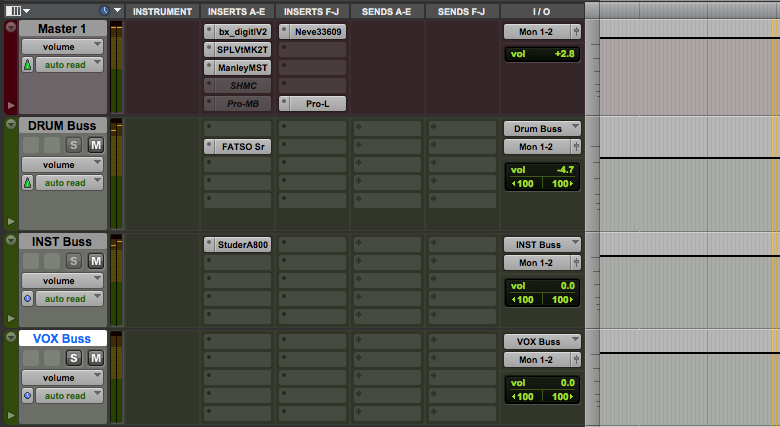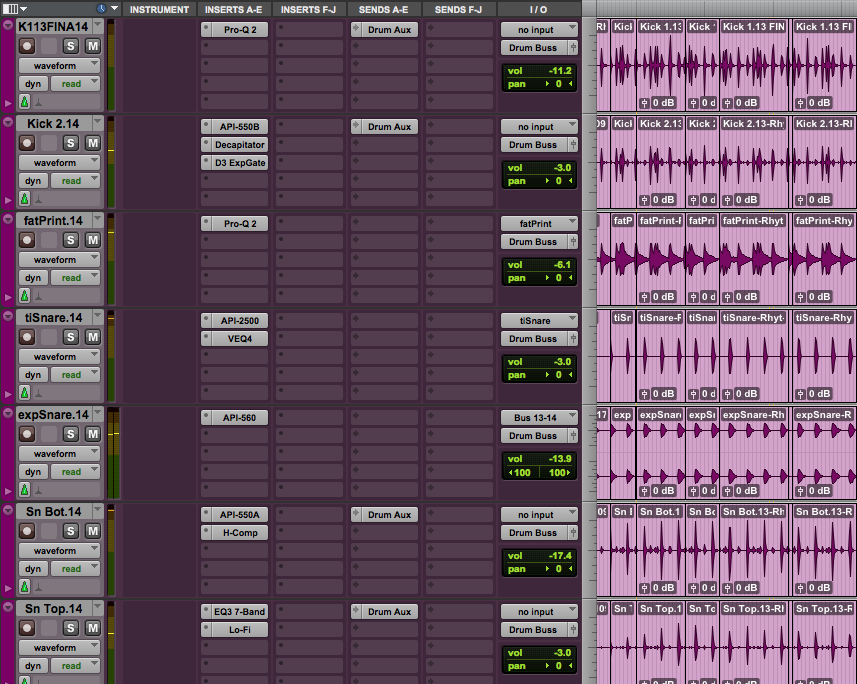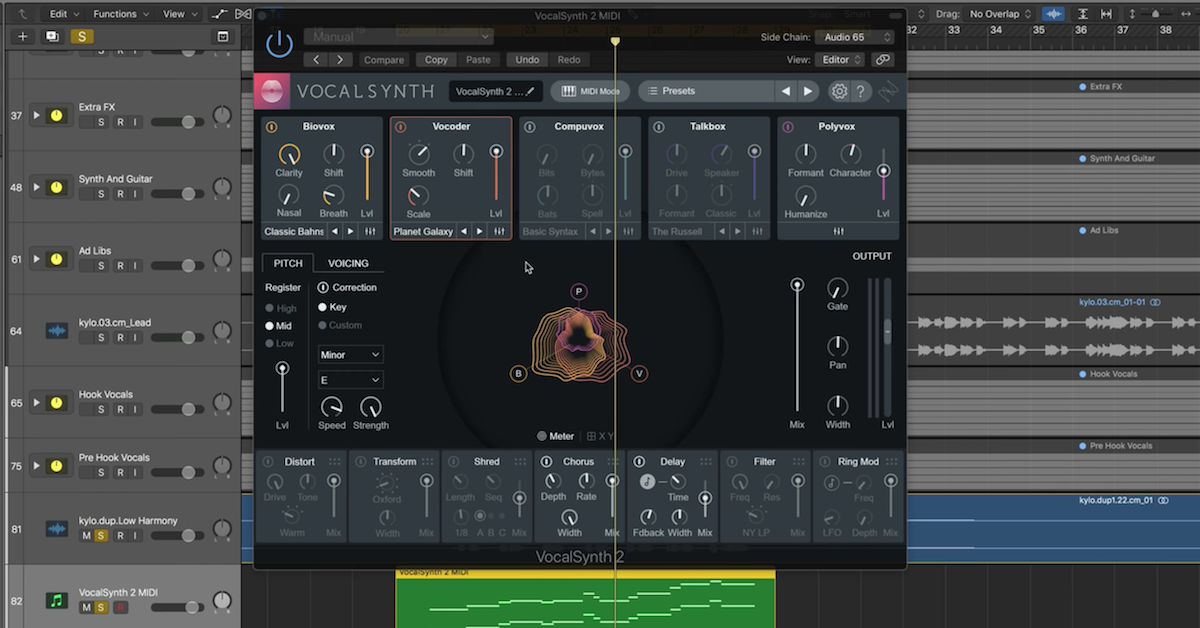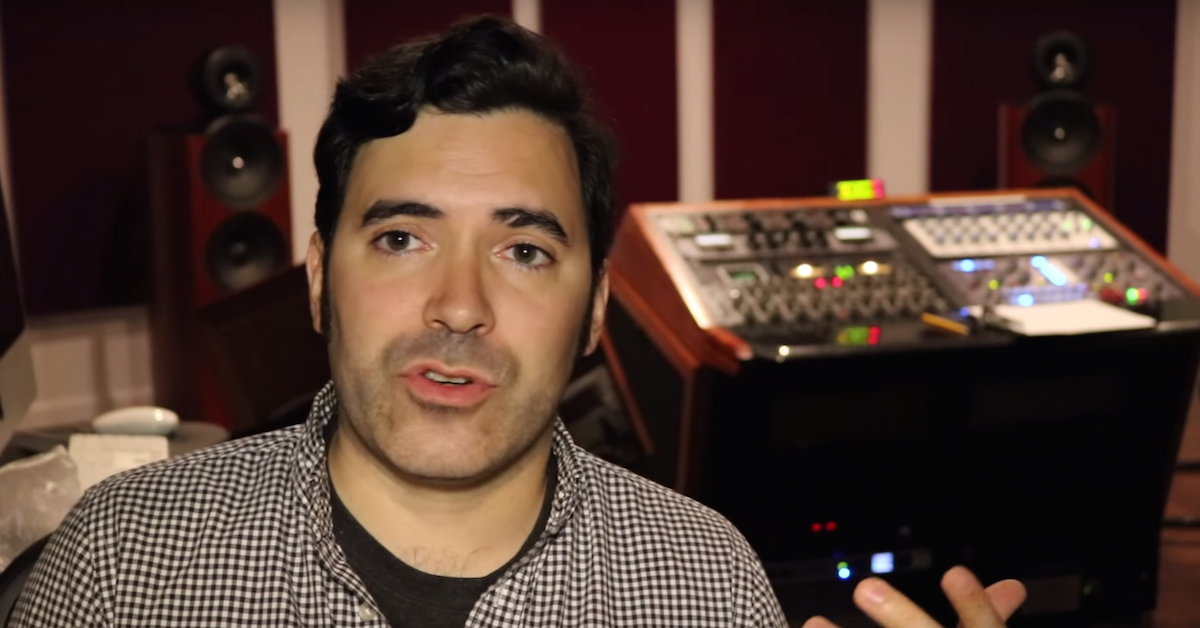5 Ways Ian Vargo Improved His Mixes in the Past Year
Article Content
Continuing on the trend of reflecting on the past year as Matt touched on recently (although I actually didn’t come across his article until finishing this one, great minds, right?), I find it useful to go back and listen to my own past productions and mixes in order to gain a bit of perspective on my progress.
Upon doing so recently, I credit these adjustments I’ve made in the past year to an overall improvement in mix quality, and a greater enjoyment of the process.
1. Adopting a multi-buss workflow
This one doesn’t hypothetically make my mixes sound better, but makes the experience faster, easier and more enjoyable (in my opinion.) Michael Brauer’s famous “Brauerizing” technique interested me for a number of reasons, so I adopted it and made a few adjustments.
When I’m about to start a mix, I create 3 auxiliary tracks and name them DRUM BUSS, INSTRUMENT BUSS, and VOX BUSS. I then hard send (out of the output) all tracks to those auxes. All drums to DRUM BUSS, all melodic instruments to INSTRUMENT BUSS, and all vocals to VOX BUSS. I then have macro controls over these groups of tracks so I can make volume adjustments, apply processing (which saves CPU rather than applying to each individual track), etc.
I also find it helps “glue” these elements together and makes tasks such as printing stems a lot quicker.


2. Listening to more music
After spending full days working on a mix, sometimes the last thing you want to do is listen to music. I went through a period where I was strictly listening to podcasts. I forced myself to get back into listening to more music, and I’m glad I did.
It’s important for a number of reasons. I like to think that I have “an encyclopedia of every sound I’ve ever heard” tucked away somewhere in my brain. The crunchy guitar sound from Weezer’s “The Blue Album”? The delay on John Lennon’s vocal from “A Day in the Life”? The Kick Drum from the chorus in “Call Me Maybe”? I’ve got these sounds memorized and I’ve practiced how to achieve them in the mix.
My point is that I need to keep updating my encyclopedia by listening to more music, old and new.
I purchased a subscription to Apple Music and now regularly listen in my car and on my desktop. I use this for referencing as well. It’s sometimes horrifying to put your mix up against Top-40, but I believe it to be essential.
3. Purchasing an Apollo and many UAD Plugins
The warmth and character of the analog emulation plugins being produced by UAD are second to none, in my opinion. Nothing compares to the sound and feel of analog, and UAD is allowing engineers to capture the sounds that have been beloved by music lovers for decades.
I’m all about actual analog hardware, but with fast turnaround times, numerous recalls, and even portability factoring into staying competitive as a producer/mix engineer, it’s getting harder to defend a purely out-of-the-box setup.
Making music became more fun after I purchased an Apollo, and I believe that translates to quality.
4. Making Pro-Q 2 my go-to paragraphic EQ
The stock Pro Tools EQ3 7-band served me well, but I needed a change.
The functionality of the FabFilter Pro-Q 2 is ridiculous.
It’s the fastest EQ I’ve ever used, and it sounds clean. If I’m trying to add character or vibe to a track, I may use an analog emulation, but for filtering, attenuating super-specific frequencies, or simple shelving, the Pro-Q 2 is my choice.
5. Worrying less about competitive volume
I’d not go as far as saying that the Loudness War has been won, considering that dealing with clients and A&R demanding loud and in-your-face mixes is still something I deal with, but it’s definitely better than it was 10 years ago.
There are plenty of great resources that suggest that we, as a whole, are making steps in the right direction in providing media that isn’t compressed to the point of lifelessness.
I can honestly say that, in the past year, I have been more conservative with compressors and limiting on the 2-buss, and my productions sound and feel better for it.
—
Here are some video tutorials to see some of these in action.





